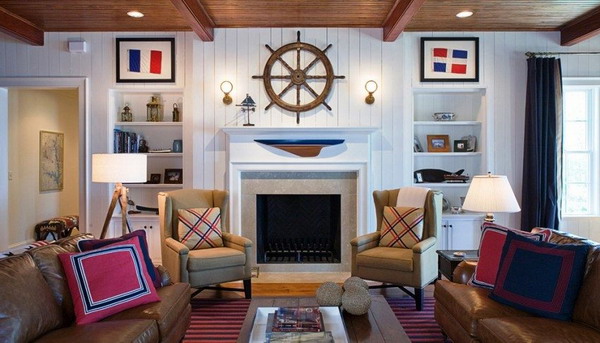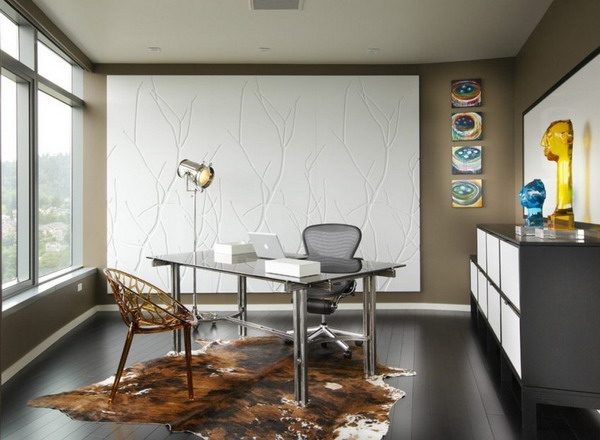The main trend in recent decades in finishing work is that wall panels for interior decoration have begun to be used everywhere. The main common advantages of this type of finishing materials are that the panels are easy to install, cheap and have an attractive decorative appearance. A wide selection of types of wall panels allows you to choose the material for any interior design.

Contents
- Wall panels for interior decoration: positive and negative points
- What materials are decorative panels made of
- Wooden panels for interior wall decoration
- Plastic panels for brick for interior decoration
- Wall panels MDF for interior decoration: photos and finishing options
- Gypsum panels for interior decoration
Wall panels for interior decoration: positive and negative points
Wall panels can be used in any type of room. At the same time, in order to choose the most convenient material for yourself, you need to study all their varieties. No matter what material the panels are made of, they all have positive and negative qualities, including:
- In general, a low price for typical finishes, although, depending on the material, the price range can be very large.
- Simple installation, feasible for everyone who knows how to work with their hands.
- Possibility of simultaneous wall insulation.
- The frame type of cladding allows you not to pay much attention to the quality of the base and makes it possible to hide all communications.
- A wide selection of sizes, designs and materials allows you to satisfy any requirement.

If we talk about the disadvantages inherent in all types of wall panels for interior decoration, then it only comes to mind that the frame finishing method takes a certain amount of usable space from the room.
What materials are decorative panels made of
Finishing panels can be classified according to several parameters, including shape:
- type-setting slats. These include all kinds of plastic and wood. This is the most common type, which is popularly called clapboard;
- tiled panels for cladding;
- sheet cladding panels, which have a large surface area and are well suited for finishing an extensive plane.

However, the classification of wall panels by the material from which they are produced is more significant:
- from different types of wood;
- plastic panels;
- glass products;
- MDF panels ;
- gypsum panels;
- soft types of panels, such as leather or upholstered in fabric.

You can still enumerate many options, but we will dwell in detail only on some of the most common types.
Wooden panels for interior wall decoration
Wooden panels for interior wall decoration are also used for decorating partitions and built-in furniture. This finish has a very presentable appearance. The main component of such panels is one or another type of wood, processed in a certain way. These can be slats or tiles with a relief selected on special woodworking machines. Wooden panels can be stained, varnished or painted. Their cost depends on the amount in the composition of natural wood.

If we consider natural wood panels, then they have the advantages that are inherent in this natural material as a whole:
- aesthetic beauty and attractiveness;
- absolute environmental safety;
- practicality and ease of care;
- ease of installation;
- low degree of thermal conductivity;
- excellent sound insulation;
- strength and good operational and consumer characteristics.

Wood panels can be used in almost all types of rooms, except for too damp ones. As a disadvantage, the high cost of natural wood panels can be noted.
Useful advice! To minimize waste during finishing, it is worth considering that the length of the wooden slatted panels is 2 or 3 m, the width is 80 or 88 mm. Tiled wood panels can be custom made in any size.

Plastic panels for brick for interior decoration
Today PVC panels have gained particular popularity . There are a significant number of their types, both in shape and design. I would especially like to note the plastic panels for brick for interior decoration. The fashion for this style periodically returns, so they are almost always in demand. They are often used to decorate the walls in the corridor, in the kitchen, on the loggia or balcony . Due to the impermeability of plastic, such panels can often be found in bathrooms and toilets. They completely cover the walls, but often only one wall or its section.

In general, plastic panels are very widespread. This is due to the qualities that polyvinyl chloride possesses:
- quite affordable cost;
- realistic drawing. The brickwork looks like the real thing;
- organic in combination with other facing materials;
- easy to install and no waste and debris;
- very light weight does not unnecessarily load the walls;
- excellent maintainability. Replacing a damaged panel is not difficult at all.

The disadvantages of plastic panels are their poor environmental friendliness and fear of low temperatures.
Dimensions of plastic sheet panels that are used in the main decoration: length – 2.5 – 3 m, width – 1 – 1.5 m, thickness – 0.8 – 1 cm.

The size of the slatted plastic panel, which has a hollow structure inside with stiffening ribs, can vary:
- panel width: 10, 25, 30 cm;
- length: 300, 450, 600 cm;
- thickness: 5, 6, 8, 10 mm.
Useful advice! It is most convenient to use slatted panels for wall decoration in an ordinary apartment. They are attached to the crate. You need to buy slats 3 m long, 25 cm wide, and 8 cm thick.

Wall panels MDF for interior decoration: photos and finishing options
In the modern construction industry, a cheap replacement for natural wood has been found, which is not much inferior to it in terms of decorative qualities. This is an MDF board. It is obtained by high-temperature pressing of woodworking waste. The synthetic compound makes the wood fibers very strong. Such plates are used in the manufacture of furniture. In addition, they are used to produce MDF wall panels for interior decoration. Photos of walls finished with this material are no different from similar ones covered with natural wood. However, the costs for this type of coverage are about 60% lower.

There are many types of MDF panels , but they all share common advantages:
- high reliability and durability, which allows these products to withstand serious loads;
- lack of fear of moisture, due to the presence of a moisture-proof coating;
- not afraid of pollution. Dust does not tend to linger on them;
- installation is feasible even for a beginner after studying simple instructions or watching a video;

- no need for constant complex care;
- small load on the walls, due to the low weight;
- production without chemicals makes it possible to achieve that this material can claim to be absolutely environmentally friendly;
The sizes of MDF panels are different. It depends on the manufacturer. Most often, you can find products 260 cm in length, from 15 to 32 cm in width, and from 7 to 14 mm in thickness.

Gypsum panels for interior decoration
Panels made of gypsum can be classified as almost artificial stone. After all, gypsum is a natural material. Hence its positive properties:
- environmental friendliness – gypsum takes the first place in this regard. It is perfectly safe;
- fire safety – gypsum is not capable of burning, melting or emitting harmful substances when heated;
- interior gypsum panels are an excellent soundproofing material. They also keep warmth well;
- a variety of volumetric patterns, the ability to select colors and individual coloring of such panels will revive any interior interior.

The following qualities can become disadvantages:
- can not be used in wet rooms;
- fragility of the material.
Most often, plaster panels are used to decorate living rooms decorated in a classic style, as well as used in modern types of design.

Useful advice! If you have artistic talent, then it is better to purchase unpainted panels. In this case, you can implement any pattern in any color scheme. In addition, you can purchase molds and cast gypsum panels yourself.
Whatever panels you choose for walls for interior decoration, it is necessary that their material and appearance fully correspond to the design that you plan to use in this room.






